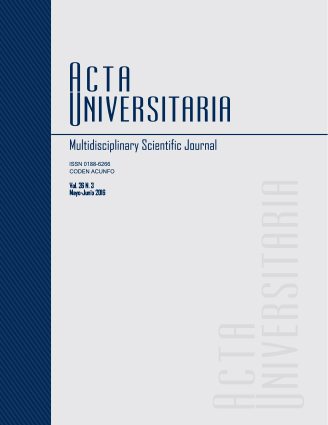Artículos de Investigación
“This is how we get along”: A qualitative study of the aggressive relationships between students at a middle school in Mexico City
Published 2016-07-11
Keywords
- School violence,
- peer relationships,
- youngsters,
- Mexico City.
- Violencia escolar,
- relaciones entre pares,
- jóvenes,
- Ciudad de México.
How to Cite
Rodríguez-Machain, A. C., Berenzon-Gorn, S., Juárez-García, F., & Valadez-Figueroa, I. (2016). “This is how we get along”: A qualitative study of the aggressive relationships between students at a middle school in Mexico City. Acta Universitaria, 26(3), 77–86. https://doi.org/10.15174/au.2016.955
Abstract
The present article explores aggressive behavior by which peers relate in a Mexico City's middle school context. Meaning condensation technique was applied to four focus group transcriptions of ten participants each, both male and female, from 7th and 8th grade students. Results showed that some fraternal relations are established through aggressive behavior, thus hindering detection of intentionality and intimidation on students responsible for aggression, crucial to identify bullying phenomenon. Complexity of peer relationships through aggressive behavior is highlighted as well as the normalization of violence within them.

